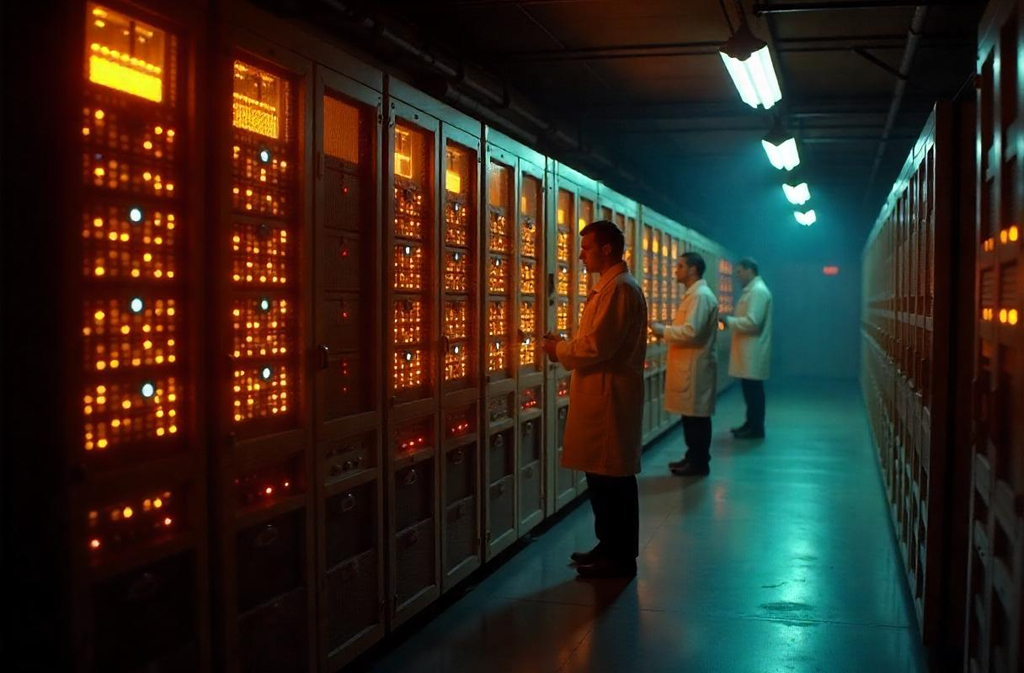NS mainframe is a term that may sound confusing at first. But don’t worry! By the end of this post, you’ll understand what it is and why it matters. These systems have been around for many years and still play a big role in today’s world of computers and business.
Even though newer technologies are everywhere, NS mainframe systems continue to serve as the backbone for many big companies. That’s because they are stable, powerful, and very reliable. Let’s dive deeper and see why they are still in use today.
Table of Contents
Understanding NS Mainframe: What Does It Mean?
First things first, let’s break it down. A mainframe is a large, strong computer that can handle many jobs at once. It’s not like a regular computer you use at home. Instead, it’s much bigger and often works behind the scenes in big places like banks, airlines, and governments.
When we talk about an NS mainframe, we’re usually referring to a specific setup or group of mainframe systems used for handling important tasks. These systems are known for their high speed, security, and the ability to run without crashing for long periods. As a result, they are trusted by many large companies.
Why Do Companies Still Use?
Even though cloud computing and modern apps are popular now, NS mainframe systems are still used because they are very dependable. When a bank or airline needs something that won’t break or crash easily, this is what they turn to.
In addition, NS mainframe systems can handle a huge amount of data at the same time. Imagine thousands of people using an ATM or booking flights at once. These systems can deal with all that without slowing down. That’s why businesses don’t just throw them away and switch to newer things right away.
How Does Work?
To keep it simple, an NS mainframe works like a super computer brain. It handles millions of tasks from different users all at once. It does this by sharing its power and memory across many different programs. Unlike regular computers, it doesn’t get tired or slow down easily.
Also, an NS mainframe keeps everything running even when something goes wrong. For example, if one part stops working, another part takes over. This is called “fault tolerance,” and it’s one of the reasons these systems are so powerful and trusted.
Where Is Used Today?
You might be surprised, but you’ve probably used a system powered by an NS mainframe without even knowing. When you take money from an ATM, buy a plane ticket, or file taxes, you may be using a service that runs on this type of mainframe.
These machines are often used in places where it’s very important to protect information and keep systems online at all times. Therefore, banks, hospitals, and even the military rely on them every single day. They may not be flashy, but they do big work behind the scenes.

Benefits of Using in the Modern World
One huge benefit of an NS mainframe is its ability to manage very big jobs. Instead of needing hundreds of small servers, one mainframe can do the same work more quickly and safely. That means less downtime and fewer problems.
Another benefit is the strong security. In a world full of online threats, this system gives peace of mind. It’s designed to keep data safe, and it rarely gets hacked. This is one major reason why many companies still trust it.
Is Learning About NS Mainframe Still Useful?
You may think that learning about mainframes is old-fashioned. But that’s not true. Many big companies are looking for people who understand how these systems work. In fact, knowing about NS mainframe can give you an edge when looking for a job in tech.
Since the systems are complex, they need smart people to run, update, and manage them. That means learning about this topic is not just interesting—it could be your path to a good career. It’s a skill that few have, which makes it even more valuable.
Challenges of NS Mainframe Systems
Even though NS mainframe systems are strong, they do come with a few challenges. For example, they can be costly to maintain. Not only do they need special rooms and cooling, but they also require experts to run them.
In addition, newer software is not always easy to use on these systems. So, companies must find ways to connect old technology with new apps. This process takes time and effort. However, many still believe it’s worth it because the system is just that reliable.
The Future of NS Mainframe: Will It Still Matter?
With so much talk about cloud and AI, some people wonder if NS mainframes will disappear. But most experts say that won’t happen anytime soon. In fact, these systems are now being updated to work with newer technologies.
As a result, the future looks steady for mainframes. They are not going away, but rather, they are changing and becoming even better. Many businesses plan to keep using them, while also finding ways to make them faster and smarter.
Final Thoughts on NS Mainframe
To wrap it up, the NS mainframe may not be something you see every day, but it plays a huge role in how the world works. From banks to hospitals to travel systems, it helps millions of people daily without them even noticing.
So next time you use an ATM or book a flight, remember there’s a powerful system working hard in the background. And that system might just be an NS mainframe. Learning about it now can give you a better idea of how technology keeps our lives running smoothly.

FAQs
Q1: What is an NS mainframe used for?
It is used to handle large jobs like banking, travel, and other important services that need to work all the time.
Q2: Is NS mainframe still in use today?
Yes, it is still used by many big companies because of its strength, speed, and trustworthiness.
Q3: Can anyone learn how to use an NS mainframe?
Yes, but it takes some training. However, if you like tech and want a good job, it’s worth learning.
Q4: Are mainframes better than cloud computers?
Not always better, but for some jobs, they are more reliable and secure.
Q5: Will NS mainframe systems be used in the future?
Yes, they are being updated and improved, so they will continue to be useful for years to come.
Visit our website: Organize Blogs

